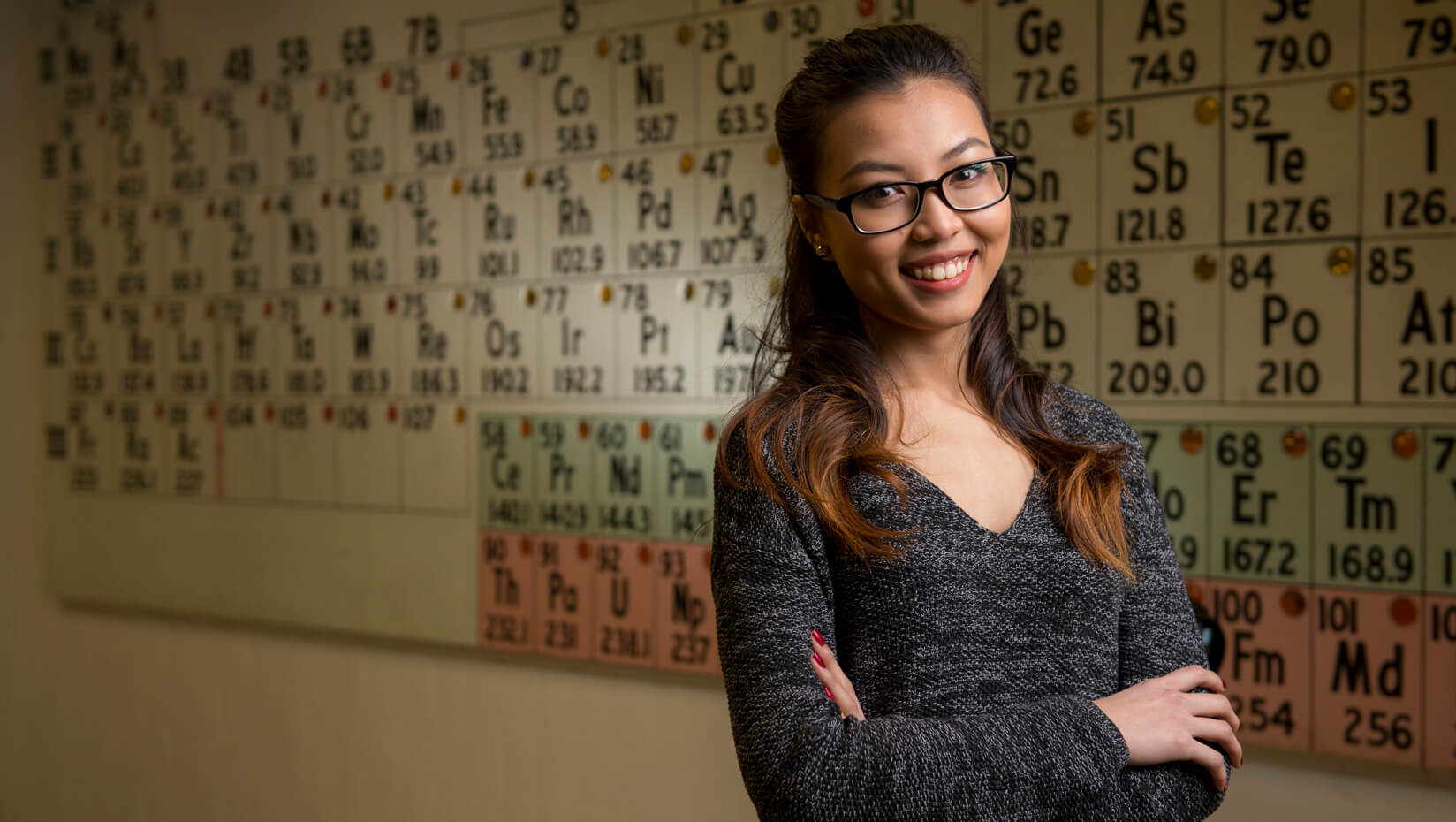
Han Nguyen: Using chemistry to fight aquaculture’s enemies
University of Maine senior Han Nguyen found her passion in an Introduction to Chemistry course her first year on campus. The Vietnam native enjoyed the intellectual challenges the course presented and especially liked the related laboratory work. And Nguyen came to appreciate chemistry’s role in daily life — from the clothes we wear to the food we eat.
“From just basic elements, we can create so many different compounds that have countless uses in pharmaceuticals, industry and household applications. It’s a boundless field and I love that chemists are creating new compounds every day,” says Nguyen.
Nguyen plans to pursue graduate work in chemistry and is interested in studying drug delivery systems with an eye toward a career researching and developing new generations of anticancer medications.
Nguyen has developed her love of research and development in the lab of UMaine Assistant Professor of Chemistry William Gramlich, her undergraduate thesis adviser. Nguyen is part of a team working to solve issues related to biofouling in aquaculture, one of Maine’s fastest growing industries.
Biofouling is what happens when barnacles, plants, algae and microorganisms attach to critical infrastructure — ropes, aquaculture nets and the hulls of marine vessels. The phenomenon increases fuel and cleaning costs for the industry, and some of the chemicals historically used to reduce biofouling can have toxic effects on marine life.
In their research, funded by Maine EPSCoR’s Sustainable Ecological Aquaculture Network (SEANET), Gramlich, Nguyen and other student chemists are exploring ecological ways of combating biofouling.
The team is mixing ecologically friendly compounds to form a coating for aquaculture ropes that acts like soap or detergent to prevent organism adhesion.
Researchers are also using natural materials to create a separate gel to coat the surface of ships. The chemical properties of the gel allow it to degrade slowly, over time, as it works to dislodge harmful organisms.
The student researchers will test the rope coatings and gel in Gramlich’s lab using algal cultures and to determine the effectiveness in preventing fouling. The hope is that organisms that come into contact with the gel dislodge from the surfaces. Researchers also hope to learn how fast organisms need to come off to avoid biofouling.
The rope coatings will be tested in the lab to determine how effective they are in preventing organisms from attaching to surfaces.
Contact: Jay Field, 207.581.3721; 207.338.8068
